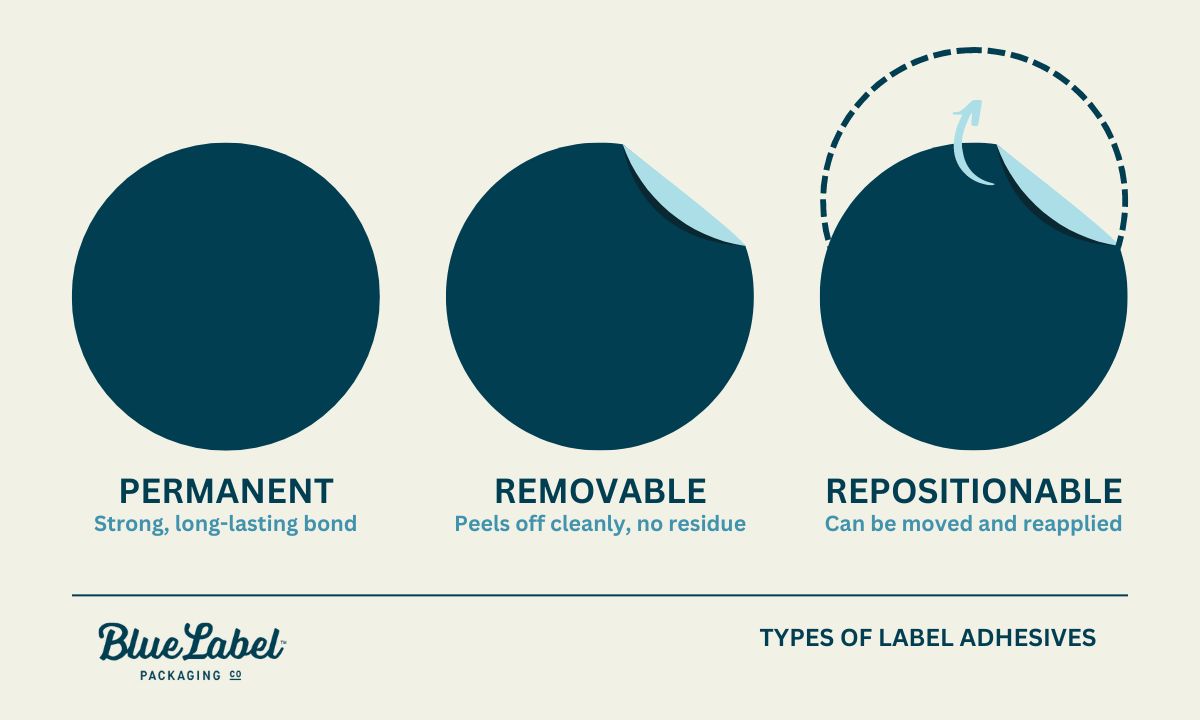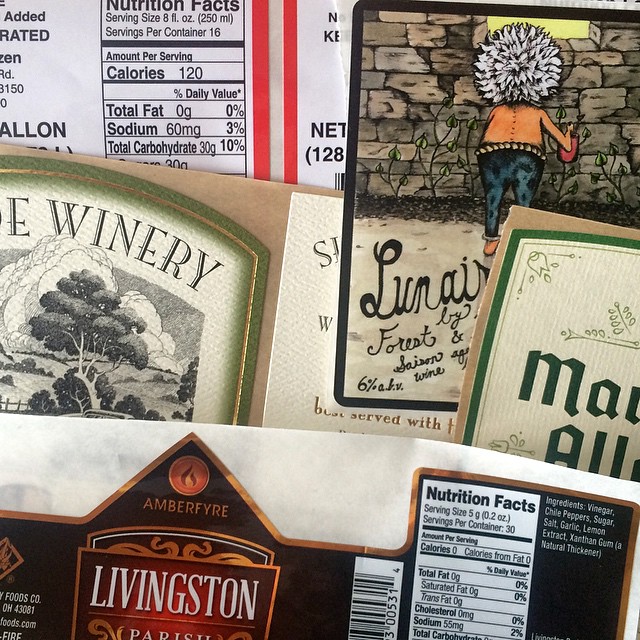What You Need to Know About Label Adhesives
The most important part of a label is what is underneath it, the adhesive. Underrated and often forgotten, beverage label adhesives will absolutely make or break your label. Dramatic? Maybe. Wrong? No way. We want to make sure you know exactly what you’re getting into when it comes to customizing your beverage label, and that begins with the all-too-essential sticky stuff.

There are many types of label adhesives
The first step to nailing down the perfect adhesive is deciding what you will need it to do. You can choose between a permanent, removable or repositionable label adhesive.
Permanent Label Adhesives
Permanent label adhesives are fairly self explanatory. These guys have tattoo status: they can be removed but not without a fight and a little bit of damage. Permanent label adhesives are usually the most cost-efficient and create the strongest bond between label and product. These are a great option if you need your beverage label to withstand any and every condition.
Removeable Adhesives
Next up: removable adhesives, who rock more of a temporary tattoo status. They can be removed without causing harm, but are definitely susceptible to temperature and humidity, so they’re not the best idea for beverages or bottles that will encounter condensation or be stored in extreme cold or heat.
Repositionable Adhesives
Finally, repositionable adhesives are in a class of their own. While they do what their name suggests, and allow you to remove and reapply without leaving a residue, after a certain amount of time, they acquire a level of permanence more on par with our permanent label adhesives.
What are these labels good for? If you’re applying your custom beverage labels manually, repositionable adhesives allow you to correct human error as long as it’s within the allotted amount of time; before permanent adhesion. (That’s right, no more crooked labels!)
In order to make sure these adhesives do their job it is very important that you consider all of the environments that your labels will be exposed to throughout their life.
- Where will they be stored prior to application? This is important because low temperatures and high humidity can affect adhesive performance (if you are storing them in a warehouse that isn’t climate controlled, for instance).
- What is the environment at the point of application—high speed bottling line, semi automatic, or by hand?
- Are the bottles being filled with a hot or cold liquid? This can affect the bond the label makes with the container.
- Is there heavy condensation or overspill where the label is being applied?
- How is your product going to be stored after it is labeled? On a store shelf, in a freezer, an ice bucket, in a shower, outside in the UV rays for an extended period of time, in an industrial atmosphere with various solvents and chemicals?
All of these questions factor into selecting the perfect adhesive for your project.
Label adhesives are either acrylic or rubber-based
Narrowing down the sea of options for you is the chemistry of your label adhesive.
Acrylic Adhesives
Acrylic adhesives are synthetic and are created to stick to a wide spectrum of surfaces, including glass and metal. These adhesives are great for surfaces that will encounter wet, rigid and/or uncertain conditions, as they hold up well under a myriad of circumstances.
Rubber-based Adhesives
Rubber-based adhesives are a little less versatile. They are the most cost-effective of the two options, but if your product label encounters humidity or extreme temperatures, this adhesive will break down over time.
Label adhesives perform in three ways
Regardless of the type of label adhesive you choose, whether its acrylic or rubber-based, all options have to answer to the three following factors:
- Tack: the stickiness to the container without any outside help.
- Adhesion: the strength of the bond after help from external pressure.
- Shear: the label’s staying power, in essence, as expressed through time.
Hey, you wouldn’t buy a diamond without checking out the cut, color and clarity, would you? To test the level of adhesion, tools like a loop tack tester or peel tester can be used.
A loop tack tester measures the adhesive’s initial “stickiness” by applying the label and gauging the force required to remove it instantly.
A peel tester, on the other hand, measures how much force is needed to peel the label off after it has adhered over time.
PS Range in label adhesives
As you investigate various label adhesives, you might come across the term “PS Range,” or pressure-sensitive range. PS range adhesives stick with just a little pressure—no heat or water needed. It’s used for the different types of labels we’ve introduced in this post, like permanent, removable, and repositionable.
Label adhesion to different containers and packaging
Label adhesives perform differently depending on the surface material and the conditions of the container or packaging. For example, adhesion on glass is typically strong, but labels may struggle on rough surfaces, cold surfaces, or uneven surfaces.
To assist with long-term adhesion, it’s important to match the adhesive to the specific container material. Here are some key considerations:
• Adhesion on surfaces like glass is usually reliable.
• Rough surfaces may require stronger adhesives.
• Cold surfaces can affect the adhesive’s ability to bond.
• Uneven surfaces may need more flexible adhesives for proper adhesion.
We do custom label adhesives right
The authority in knowledge and execution, Blue Label Packaging Company will make sure your custom beverage labels are perfect. That means the highest quality labels, turned around quicker than you’d believe, at the most cost effective option for your brand. Oh, and we don’t stop until you’re satisfied. Guaranteed. Call us or shoot us an email. Let’s grab a beer and talk labels.

